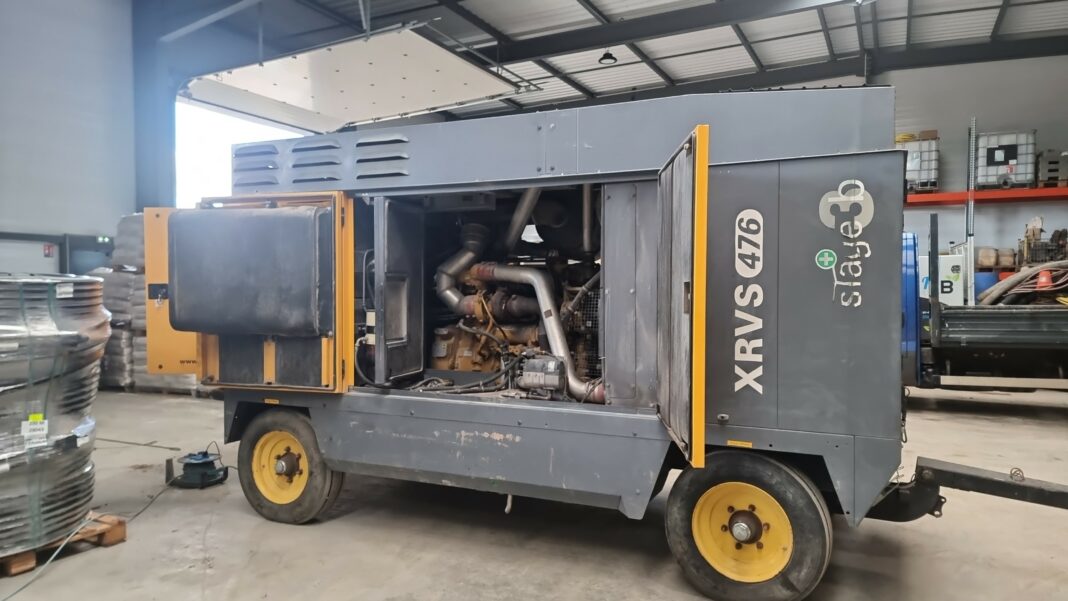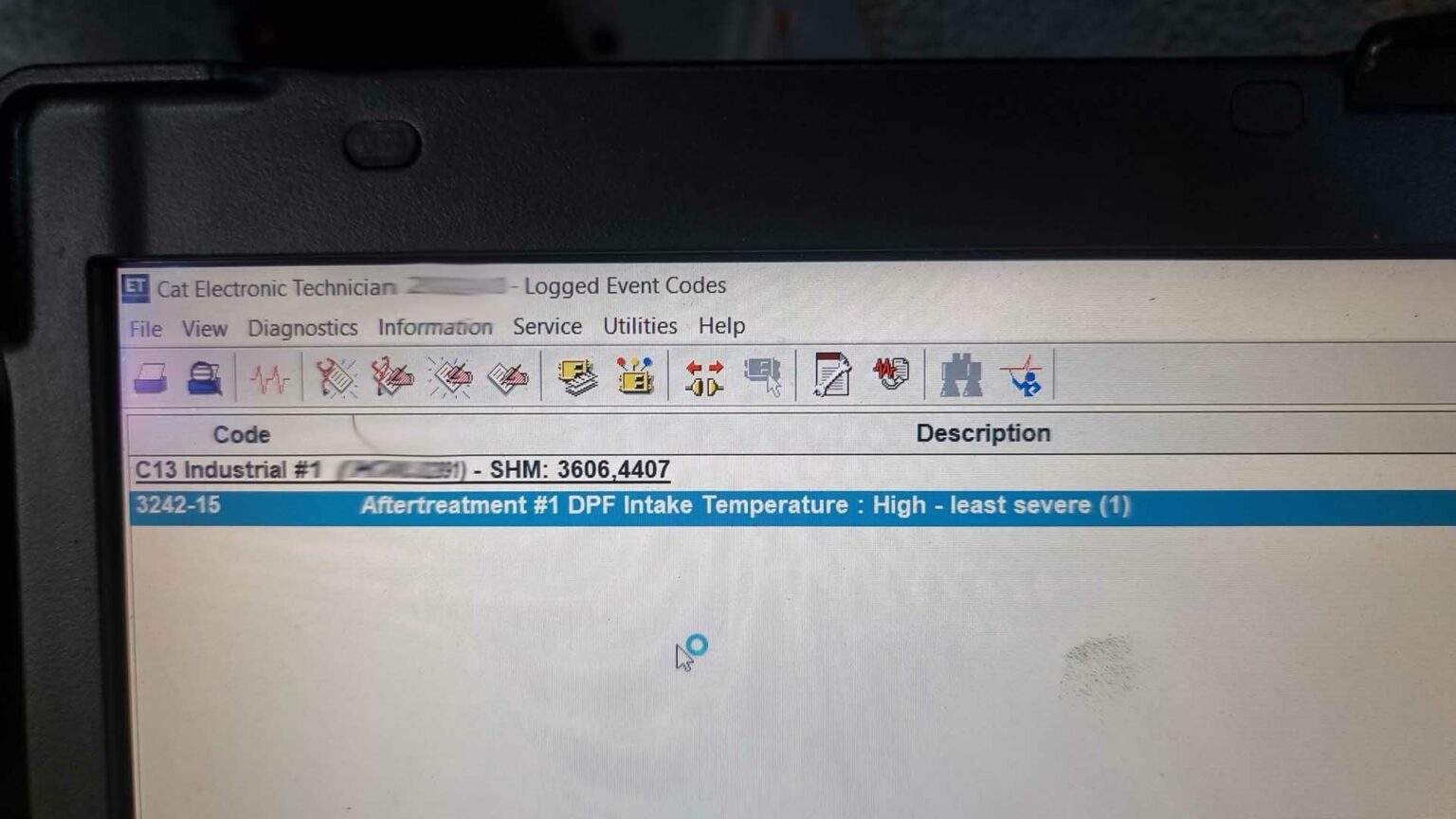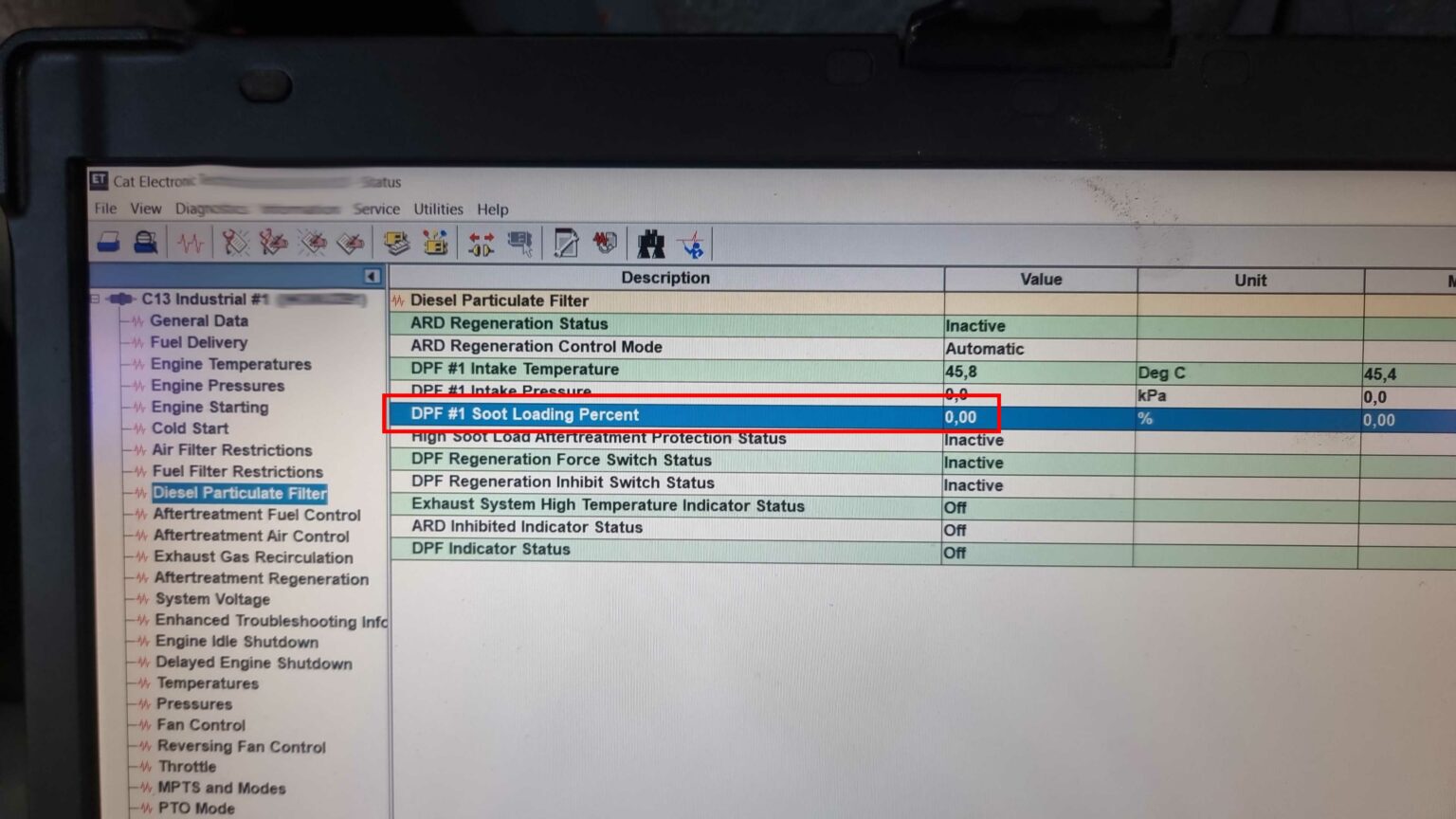Atlas Copco regeneration problem

Following a problem with the regeneration of the particulate filter on an Atlas Copco compressor fitted with a Caterpillar engine, we had to find a solution to allow the machine to be restarted. Indeed, the substantial drops in engine speeds due to the loss of power during regeneration attempts jeopardized the site. Used for a drill, there is a risk of landslide internally if the pressure sufficient to raise the sand is not sufficient.
Explanations on DPF faults on Atlas Copco CAT C13
The ARD (Auto-Regeneration Device) head is used to regenerate diesel particulate filters (DPF) in Caterpillar engines. It burns off soot particles that have accumulated in the DPF, helping to maintain its efficiency and avoiding costly replacement costs. This regeneration is usually performed automatically when the engine is used at high loads.
The ARD head uses the heat produced by the engine to regenerate the diesel particulate filter (DPF). When soot particles build up in the DPF, the ARD head increases engine temperature by increasing the combustion rate, allowing the particles to burn off. This is usually achieved by increasing the proportion of air in the fuel-air mixture, which increases the combustion temperature. Regeneration can also be initiated manually by the operator if needed. It is important to note that regeneration cannot take place if the engine is below a certain temperature or if the soot level is too high.

Faults 3696-2 and 3242-15 indicate problems with Diesel Particulate Filter (DPF) regeneration and DPF inlet temperature.
Fault 3696-2 indicates that the DPF regeneration force switch has problems, such as erratic, intermittent or incorrect response. This could be due to an electrical issue with the switch itself, or a communication issue with the Engine Control Module (ECM). It is important to check the wiring and connectors related to the switch to ensure that they are not damaged or improperly connected.
Fault 3242-15 indicates that the DPF inlet temperature is too high. This can be caused by a number of factors, such as a fault in the DPF cooling system, a blockage in the air intake system, or a problem with the DPF inlet temperature control. . It is important to check the components related to the cooling and air intake system to make sure they are working properly and are not clogged. It is also important to check the DPF inlet temperature control settings to ensure they are correct.
Solutions provided to counter the regeneration problem
ECM firmware correction involves updating the Engine Control Module (ECM) software to fix existing problems or to improve engine performance. This can be done by using a specialized programming tool to upload new software to the ECM.
As for the inhibition of the ARD head auto-regeneration function, this can be resolved by correcting the ECM programming parameters that control auto-regeneration. It is possible to reset the parameters to factory or adjust them to adapt to the specific needs of the vehicle in order to remove the use of the filtration system.
Following this operation, the particle filter itself can be removed and emptied. The ARD head (its electronic control) can be permanently disconnected. By restarting the engine, connector of the ARD head disconnected, we notice that the soot rate has dropped to 0%, and that regenerations will never be necessary again.

